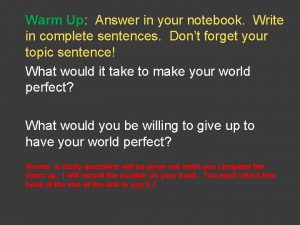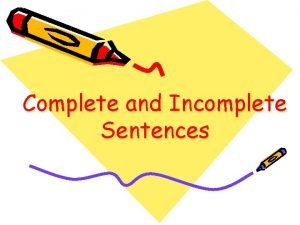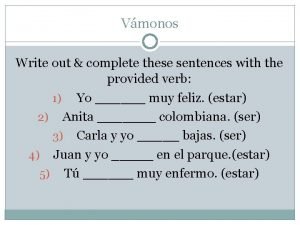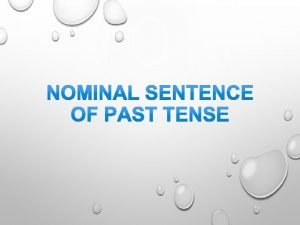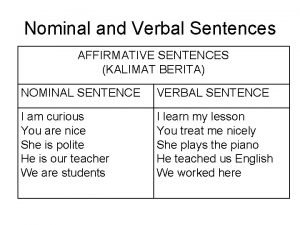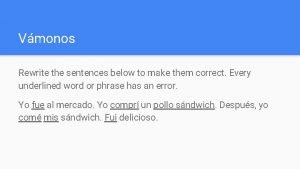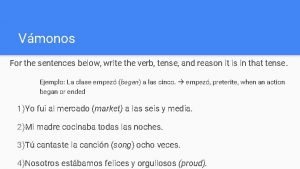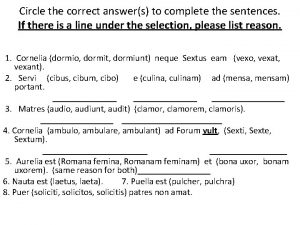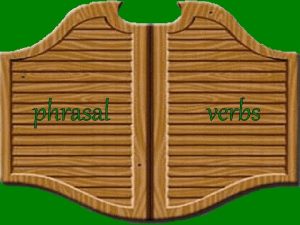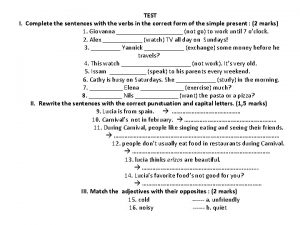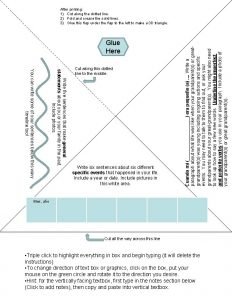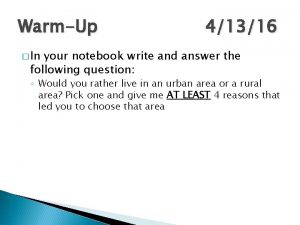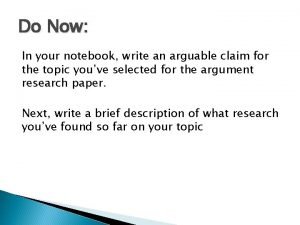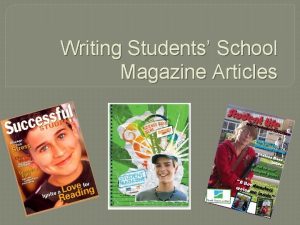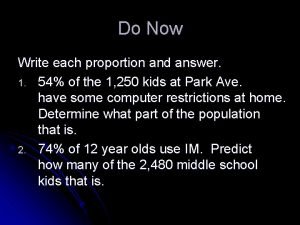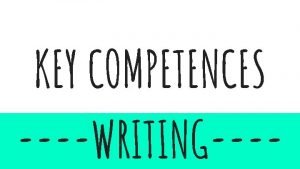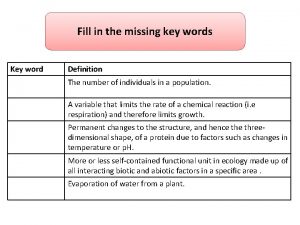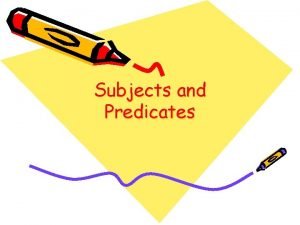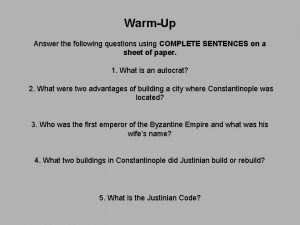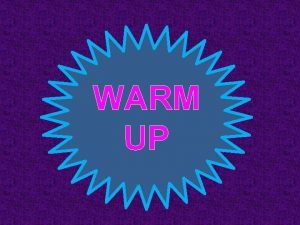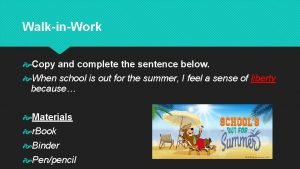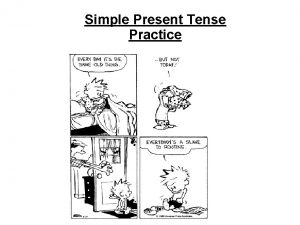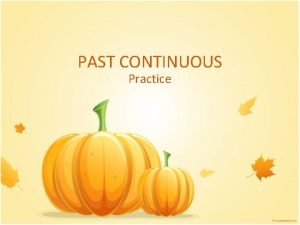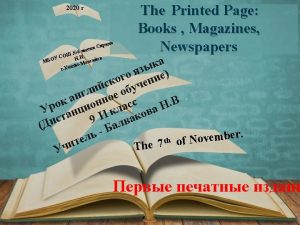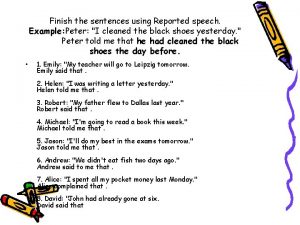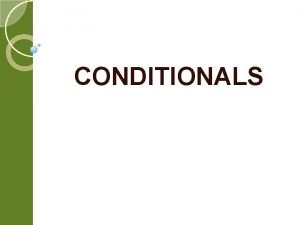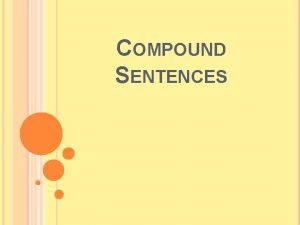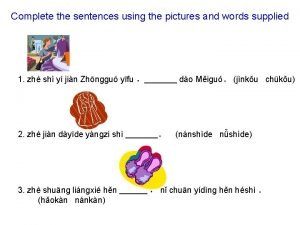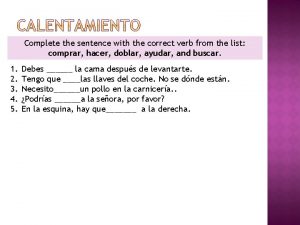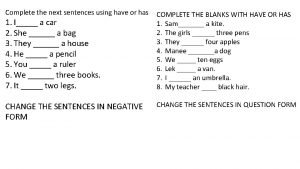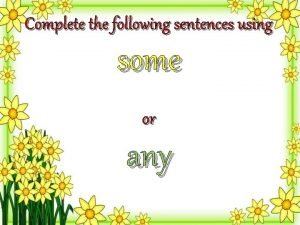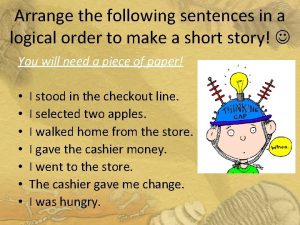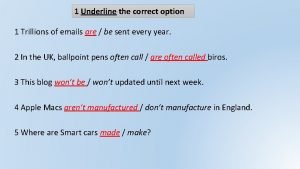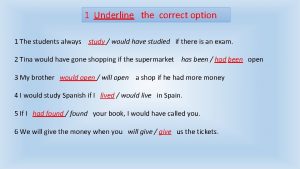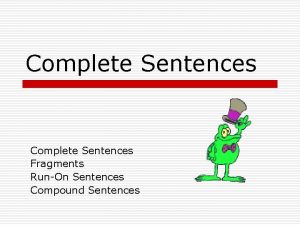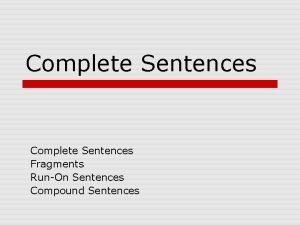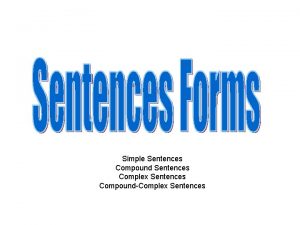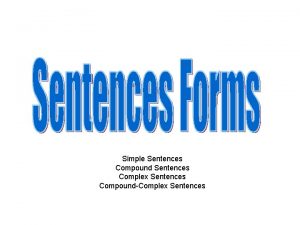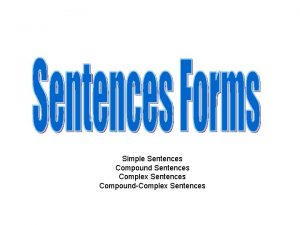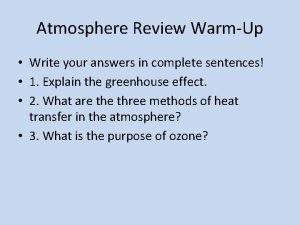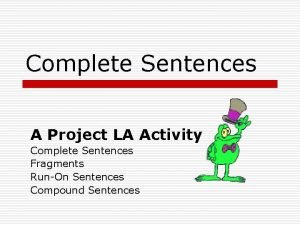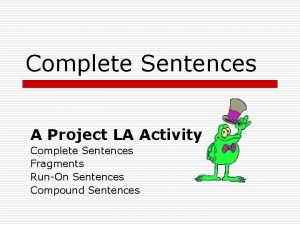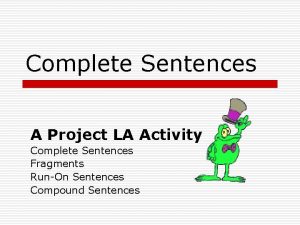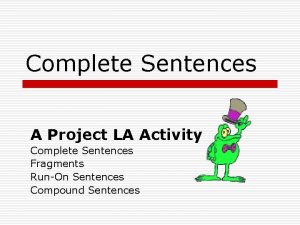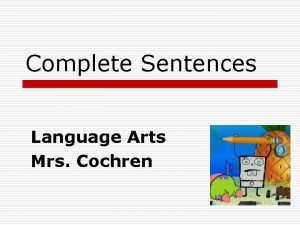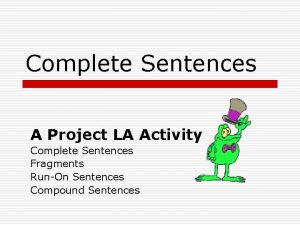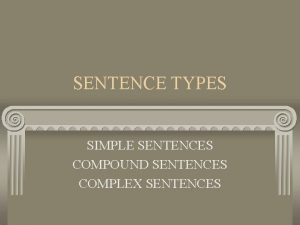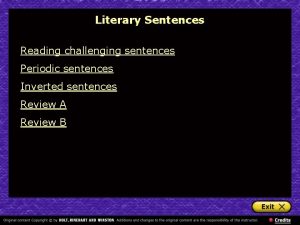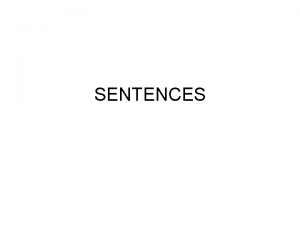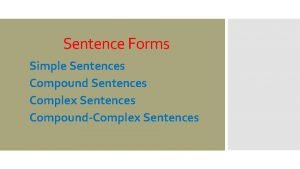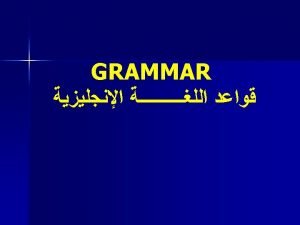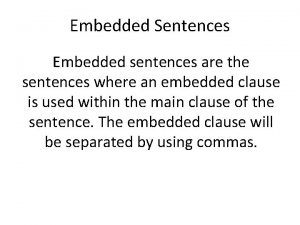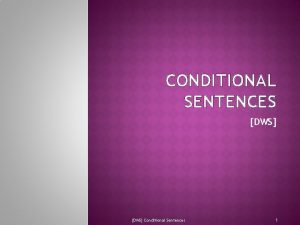WarmUp write your answers in complete sentences 1






















































- Slides: 54

Warm-Up: write your answers in complete sentences. 1. What new institutions occurred that helped start the Renaissance? 2. What new group of people appear in the Renaissance? 3. What was the Renaissance a “rebirth” of? 4. Where did the Renaissance start? Why there?

ARTISTS OF THE RENAISSANCE

Essential Question: How did the Renaissance change art, politics, economics, and technology in Western Europe?

The Crusades, the 100 Years War, and the Black Plague helped bring an end to the Middle Ages and gave rise in the 1400 s to an era called the Renaissance means “rebirth”; what was being reborn were the ideas of Classical Greece and Rome

During the Renaissance, people had more options than ever before which led to a belief that people can accomplish anything Also, the people of the Renaissance wanted to celebrate surviving the Middle Ages.

The Renaissance was led by a group of scholars and artists called “humanists”; they placed man, rather than God and religion, at the center of their world-view Social status was based on wealth and ability, not birthright Humanists studied the “classical” ideas of Greece and Rome and believed that education could make the world a better place

What was expected of men and women in the Renaissance? The “ideal man” was well-educated, cultured, could dance, write poetry, and play music; (called a “Renaissance Man”) The “ideal woman” should have the same qualities (cultured, intelligent) as men but should not seek fame or political power Renaissance women were better educated but had fewer rights than Medieval women

Economic Impact: Increased trade The Renaissance started in Italian cities because…

Increased trade gave rise to Italian city-states where people exchanged goods and ideas and a wealthy middle class of bankers and merchants Also, Italian scholars and artists were inspired by the ruins of classical Rome.

Wealthy bankers and merchants wanted to show off their new status, they became patrons who paid artists to create magnificent art

Kings and popes also became patrons who commissioned art

Artistic Impact: More Realism Renaissance thinkers and artists differed from artists of the Middle Ages: 1. Humanism: The uniqueness of man and the power of human reason 2. Secularism: The focus was on this life and not completely religious

New styles and techniques of Renaissance art 1. Realism and emotion in art Renaissance artists produced the first nude paintings and sculptures showing accurate depictions of the human form since the Romans

New styles and techniques of Renaissance art 2. Classical: inspiration from Greece and Rome Greek Renaissance

New styles and techniques of Renaissance art 3. Emphasis on individuals and interaction between people

New styles and techniques of Renaissance art 4. Geometric arrangements

New styles and techniques of Renaissance art 5. Perspective

New styles and techniques of Renaissance art 6. Using light and shadows Chiaroscuro (sharp contrast of light and dark) Sfumato (shading)

Renaissance Artists

Michelangelo Raphael Leonardo Donatello

Donatello Donato di Niccolò di Betto Bardi (known better as “Donatello”) was the first great sculptor of the Renaissance

Donatello’s “David” was the first large, free-standing sculpture of the Renaissance

Michelangelo di Lodovico Buonarroti Simoni (better known as simply “Michelangelo”) was a very famous Renaissance artist He was a painter, sculptor, architect, and poet

Michelangelo His sculptures like “Pieta” and “David” were carved from a single block of marble and glorified the human form

Michelangelo Renaissance art is known for having hidden meanings and visual tricks, as well as some dark humor

Michelangelo

Michelangelo’s greatest work is the 130 ft x 44 ft ceiling of the Sistine Chapel, which shows Biblical images of amazing detail, power, and beauty

Leonardo da Vinci The ultimate “Renaissance man” was Leonardo di ser Piero da Vinci, better known as simply “Leonardo da Vinci”

Leonardo da Vinci He was a painter, sculptor, architect, inventor, engineer, scientist, alchemist, musician, anatomist, map-maker, and writer

Leonardo da Vinci From da Vinci’s sketchpad: an idea for an armored vehicle Leonardo first gained employment as an engineer designing weapons for the ruler of the Italian city of Milan After that, his skills as painter and architect attracted the interest of many powerful people, and he went on to make some of the greatest art in history

His painting, “Last Supper”, shows Jesus’ final meeting with the Twelve Apostles before his crucifixion

Leonardo da Vinci’s greatest masterpiece was the “Mona Lisa”, which was known for its emotion, detail, and depth

Da Vinci studied birds and tried to engineer flying machines; none were practical, only imaginative

Da Vinci had a darker side: in his study of the human body, he exhumed many corpses and dissected them


In a blend of art and science, da Vinci sketched the drawing of the “Vitruvian Man”, which showed the ideal mathematical proportions of the human body

“Art is never finished, only abandoned. ”

Raphael Raffaello Sanzio da Urbino (better known as “Raphael”) “perfected” Renaissance painting He improved perspective and realism by studying the works of Leonardo and Michelangelo

Raphael’s “Betrothal of the Virgin”

Raphael’s talents caught the notice of Catholic Popes, who commissioned him to create numerous religious paintings

Raphael’s talents caught the notice of Catholic Popes, who commissioned him to create numerous religious paintings


Activity: Renaissance Art ■ Directions: Select one artwork by a Renaissance artist and answer the following questions. After you finish the questions, create your own artwork using the Renaissance techniques you’ve learned about. 1. What artwork did you choose? Who was the artist? 2. What/who is the subject of the artwork? How do you know? 3. What techniques does the artist use? 4. What does the artwork tell us about the culture of the time?

Brunelleschi Filippo Brunelleschi was Florence’s greatest architect Renaissance architects traded ornamentation and pointed arches for circular arches and columns

The Cathedral’s dome inspired many modern designs Il Duomo, Florence US Capital, St. Paul’s, Peter’s, London Rome St. Washington, D. C.

Renaissance Writers: Petrarch The “Father of Humanism, ” like other writers of the Renaissance era studied, he Roman and Greek texts, wanting to spread that Classical knowledge

In the Middle Ages, writings focused on God and religion; the Renaissance focused on secular (nonreligious) matters Humanist writers tried to balance their faith with individual dignity, human society, and nature

Renaissance Writers: Dante Alighieri was a writer from Florence, Italy who wrote in the “vernacular”, which is common everyday speech He wrote a lengthy poem called “The Divine Comedy” that remains one of the most celebrated pieces of literature of all time

The plays and sonnets of William Shakespeare focused on how people interact with each other

Political Impact: Machiavelli Niccolo Machiavelli was a former government worker in Florence who wrote about his experiences in politics His book is entitled “The Prince” Rulers will use Machiavelli and other’s writings to justify being absolute monarchs

Some of Machiavelli’s ideas about politics: (1) to be a successful ruler, a prince must be willing to be feared over being loved (2) A ruler should use force and be willing to lie to stay in power and bring peace to the city-state (4) Machiavelli wrote that the (3) He wrote that rulers ends (achieving a goal) justifies should do what works the means (actions taken to best, not necessarily what achieve that goal) is good or moral

Technological Impact: Printing Press In 1455, a German artisan and businessman named Johannes Gutenberg took the Chinese idea of the printing press and invented a far more efficient version of it The printing press made Gutenberg’s invention production of books would greatly help the ideas of the Renaissance spread (which were handwritten before) far cheaper, throughout Europe easier, and faster

The Effect of the Printing Press The first full-sized book that was printed was the Bible

Europeans questioned many existing preconceptions, such as ideas about religion, science, and government The Renaissance era marked the rise of the West, a time when Europeans began to spread their influence to parts of America and Asia
 In your notebook write a sentence to explain each statement
In your notebook write a sentence to explain each statement Write questions with was or were in your notebook
Write questions with was or were in your notebook Incomplete sentence คือ
Incomplete sentence คือ Complete these sentences with adjectives from exercise 1
Complete these sentences with adjectives from exercise 1 Warmup ratio
Warmup ratio Warmup 65
Warmup 65 Gmass warmup
Gmass warmup Status vs class
Status vs class Surface area warm up
Surface area warm up Rhyme glow
Rhyme glow Multiply powers
Multiply powers Java warmup
Java warmup Define:warmup
Define:warmup Persuasive essay quotes
Persuasive essay quotes Tom schwartz tinman
Tom schwartz tinman 65 mins
65 mins Warmup end
Warmup end Write three positive sentences of nominal sentences
Write three positive sentences of nominal sentences Present particile
Present particile Write each of the two sentences below as one sentences
Write each of the two sentences below as one sentences Write the sentences below in the past simple.
Write the sentences below in the past simple. Complete the sentences with the correct answers
Complete the sentences with the correct answers Phrasal verbs complete the sentences
Phrasal verbs complete the sentences Healthy sentences
Healthy sentences Complete the sentences with your
Complete the sentences with your In your notebook write sentences from the prompts
In your notebook write sentences from the prompts Glue sentence for class 1
Glue sentence for class 1 Answer the questions. write in your notebook
Answer the questions. write in your notebook Write answers to the questions in your notebook
Write answers to the questions in your notebook In your notebook write your cv
In your notebook write your cv School magazine article ideas
School magazine article ideas Each proportion write your answer in your notebook
Each proportion write your answer in your notebook Writing postcard
Writing postcard Give us your hungry your tired your poor
Give us your hungry your tired your poor Complete the missing word to complete the three key words
Complete the missing word to complete the three key words Simple predicate
Simple predicate Answer these questions using complete sentences
Answer these questions using complete sentences Complete the sentences with these verbs
Complete the sentences with these verbs Ciontracker
Ciontracker Simple present examples affirmative
Simple present examples affirmative Complete the sentences using the past continuous
Complete the sentences using the past continuous Listening and complete the text
Listening and complete the text Complete the sentences using reported speech.
Complete the sentences using reported speech. Conditionals finish the sentences
Conditionals finish the sentences Complete the sentences ex 4
Complete the sentences ex 4 How to combine two complete sentences
How to combine two complete sentences Present continuous de write
Present continuous de write Make sentences using the pictures and the words
Make sentences using the pictures and the words Complete the sentences with the correct verbs.
Complete the sentences with the correct verbs. Complete the sentences with have or has.
Complete the sentences with have or has. Complete the following sentences using some or any
Complete the following sentences using some or any Complete the sentences below
Complete the sentences below Which fossil is the oldest?
Which fossil is the oldest? 1.underline
1.underline Underline the correct options
Underline the correct options
